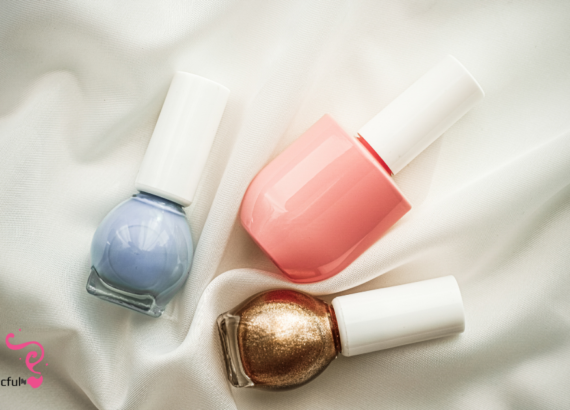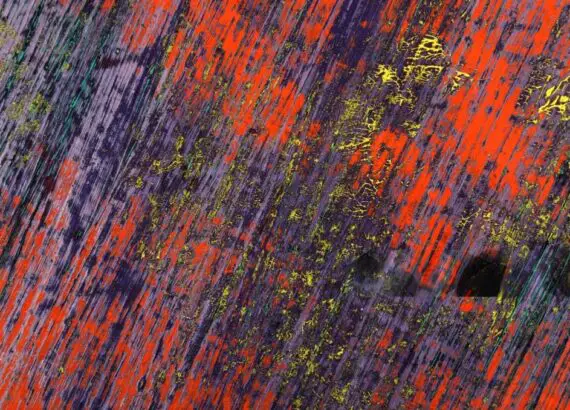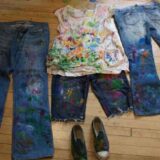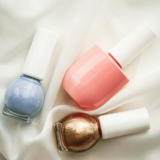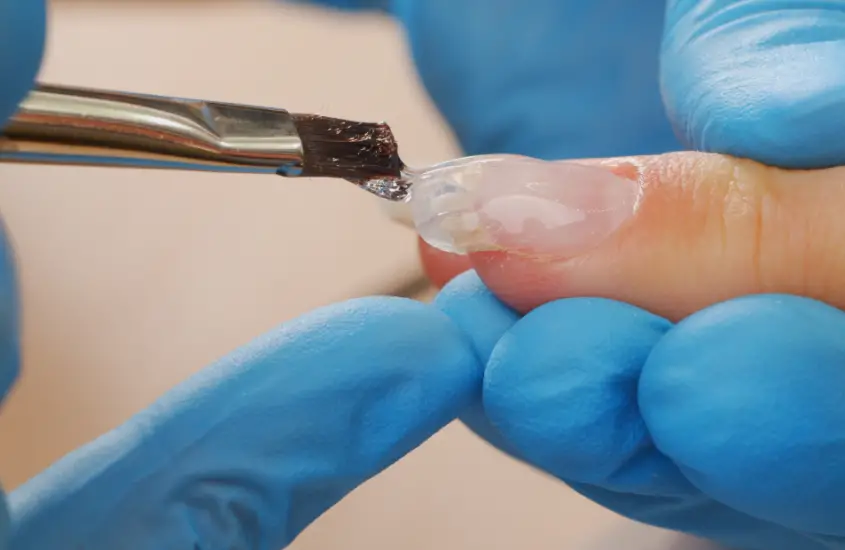How to Make Purple Color with Acrylic Paint?
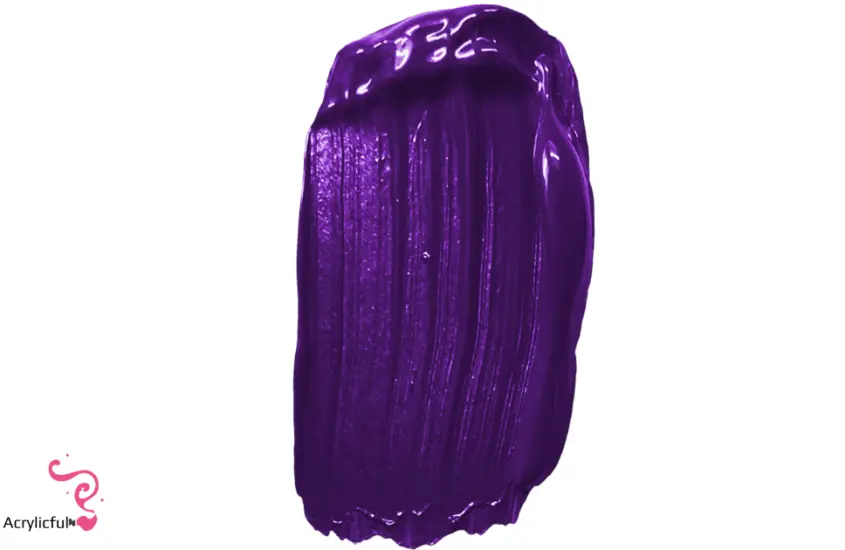
To begin with, Acrylic paint is a favorite medium among artists, offers a vast palette of colors. Among these, creating your own purple can be a rewarding and exciting endeavor. In this guide, we’ll explore how to make purple color with acrylic paint, unlocking a spectrum of shades for your artistic expressions.
How to Make Purple Color with Acrylic Paint? Acrylic paint has gained popularity for its versatility and vibrant hues. One intriguing aspect for artists is the ability to create custom colors. Among these, purple stands out for its rich and regal vibe.
I. Understanding Color Theory
Absolutely, diving into color theory is like unlocking the secrets of the artist’s palette. It’s like understanding the alphabet before you start writing, right? Primary colors—red, blue, and yellow—are like the ABCs. When you combine these foundational colors, you get a whole new language: secondary colors. And lo and behold, purple is one of these captivating secondary colors, born from the beautiful blend of red and blue. It’s like a magical transformation happening right there on your palette. What are your thoughts on this colorful journey so far?
II. The Magic Behind Purple
Absolutely! Creating purple is like being a master chef in the art studio. It’s all about finding that perfect recipe, that sweet spot of red and blue. The magic happens in the ratio—tweak it just right, and you can go from a soft lavender to a deep, mysterious violet. It’s like playing with flavors, but in this case, it’s all about the visual feast. What do you think about this artistic culinary adventure so far?
III. Essential Supplies
Gearing up for this artistic adventure requires a few key tools. Picture yourself as an art explorer about to embark on a vibrant journey. First and foremost, arm yourself with quality red and blue acrylic paints—the heroes of our color palette. Next, grab a palette, your trusty mixing companion. And don’t forget your mixing tools; they’re like the magic wands of the art world.
Now, imagine your canvas as a dedicated surface, a playground for your creative experiments. Having that designated space ensures a smooth and enjoyable process. What are your go-to tools when you’re getting ready to unleash your creativity on a canvas?
IV. Step-by-Step Guide To Make Purple Color with Acrylic Paint
How to Make Purple Color with Acrylic Paint, let’s break down the steps for crafting your own purple masterpiece:
- Start with a Clean Palette: Think of it as laying down a fresh canvas for your colors to dance on. Cleaning your palette ensures a pristine starting point and avoids any unwanted color surprises.
- Squeeze Equal Amounts: Picture this like measuring ingredients for a recipe. Dispense an equal amount of red and blue paint onto your clean palette. It’s the beginning of your colorful concoction.
- Mix Gradually: Time to bring out the palette knife, your artistic wand. Gradually blend those red and blue hues together. It’s like orchestrating a beautiful dance between colors.
- Observe Color Changes: Watch the magic unfold as the colors mix. Notice how the shade evolves right before your eyes. It’s like witnessing a transformation, isn’t it?
- Adjust Ratios: This is where the artistry comes in. Fine-tune the ratios of red to blue until you land on that perfect shade you’re envisioning. It’s like being a color maestro, conducting your symphony of hues.
How does this step-by-step guide resonate with your painting process?
V. Tips for Achieving Vibrancy
Absolutely, let’s dive into some pro tips for making your purple color with acrylic paint:
- Limited Palette for Clean Results: Think of your palette like a curated collection. Using a limited set of colors can intensify your purple and keep your masterpiece looking clean and vibrant.
- Understanding Paint Opacity: It’s like getting to know the personalities of your paints. Some are more transparent, while others are more opaque. Understanding this allows you to control the intensity of your purple, adding depth and richness.
- Experiment with Layering Techniques: This is where the artistry gets exciting. Imagine your canvas as a playground. Experiment with layering your purple—building it up in layers can create a depth that’s visually captivating.
Think of these tips as your secret weapons in the world of color. How do you usually approach achieving vibrancy in your paintings?
VI. Common Mistakes to Avoid
Absolutely, let’s steer clear of common pitfalls on our artistic journey:
- Say No to Low-Quality Paints: It’s like using cheap ingredients in a gourmet dish. Opt for quality acrylic paints. The richness and vibrancy of your purple depend on the caliber of your materials.
- Don’t Rush the Mixing Process: Picture this like letting a cake bake. Rushing through the mixing can result in a muddy or uneven purple. Take your time, enjoy the process, and savor the color evolution.
- Mind the Lighting: Think of lighting as your painting’s spotlight. Neglecting its impact is like setting the stage in the dark. Consider your lighting environment; it can influence how your purple appears. Natural light is your best friend here.
Avoiding these pitfalls ensures that your purple creation shines bright and true. What other challenges have you encountered in your painting adventures?
VII. Exploring Different Shades
- Experiment with White for Pastel Variations: It’s like adding a breath of fresh air to your palette. Mixing white with your purple can create soft, pastel variations—perfect for adding a touch of whimsy to your artwork.
- Incorporate Black for Deeper Tones: Picture this as adding shadows to your masterpiece. A touch of black can deepen your purple, adding drama and intensity. It’s like unlocking the mysteries hidden in the shadows.
- Explore Complementary Colors for Unique Shades: Think of complementary colors as your artistic accomplices. Mixing them with your purple can birth unique and unexpected shades. It’s like discovering hidden treasures on your color palette.
VIII. Creative Applications
Once you’ve mastered the art of making purple, the creative possibilities are endless:
- Mix Complementary Colors for Dynamic Pieces: Imagine the dance of colors on your canvas. Experiment with mixing your homemade purple with complementary colors to create dynamic and visually striking pieces.
- Encourage Experimentation: Your palette is your playground. Encourage yourself and others to experiment with this newfound purple prowess. It’s like giving wings to creativity—let it soar!
VIII. Troubleshooting
- Dealing with Muddy Colors: Picture this as clearing the fog. If your purple looks muddy, consider cleaning your palette and starting fresh. You can also try adjusting the ratio of red to blue or experimenting with a clean mixing tool.
- Adjusting Color Temperature: It’s like fine-tuning the thermostat for your colors. If your purple feels too warm or cool, tweak the ratio of red to blue. Warm it up with more red or cool it down with additional blue until you find that perfect temperature.
- Salvaging Unexpected Outcomes: Think of unexpected outcomes as artistic surprises. Embrace them! If your purple takes an unexpected turn, see it as an opportunity to create something unique. Experiment with additional colors or techniques to turn the unexpected into a masterpiece.
IX. Inspiring Projects
- Discover Artists Excelling in Purple Hues: Imagine stepping into a gallery of purple wonders. Explore and draw inspiration from artists who have mastered the art of working with purple. It’s like being mentored by the masters.
- Explore DIY Projects Using Homemade Purple: Your homemade purple is a treasure. Consider incorporating it into DIY projects—be it home décor or personal accessories. Let your creativity run wild and share your unique creations with the world.
- Share Your Creations with the Creative Community: Your artwork is a story waiting to be shared. Join the creative community, showcase your purple-infused creations, and inspire others. It’s like being part of a vibrant, artistic conversation.
X. Benefits of Creating Your Own Colors
- Personalization: Imagine your artwork as an extension of yourself. Creating your own purple allows for a personalized touch, making your creations truly unique and reflective of your artistic identity.
- Cost-Effectiveness: Think of it as being a savvy artist. Crafting your own colors can be more cost-effective than purchasing a plethora of pre-made shades. It’s like having a customized palette without breaking the bank.
- Sense of Accomplishment: Picture this as reaching the summit of a creative mountain. When you master the art of making your own purple, there’s a profound sense of accomplishment. It’s like unlocking a new level in your artistic journey.
XI. Showcasing the Final Results
- Display the Array of Purple Shades: It’s like hosting a gallery of your own creation. Showcase the spectrum of purple shades you’ve crafted—each one a testament to your artistic skills and creativity.
- Invite Readers to Share: The creative journey is more enjoyable when shared. Invite readers to share their own artistic endeavors, inspired by your guide. It’s like creating a community of artists, exchanging ideas and celebrating each other’s unique talents.
So, how do you feel about the idea of sharing your artistic journey and inviting others to showcase their creations inspired by your guide?
Conclusion
In conclusion to, in the vast world of acrylic painting, there’s a joy that’s truly unmatched—the joy of crafting your own purple. This experience is not exclusive to seasoned artists; it welcomes beginners with open arms. In the final analysis, it’s our hope that it has empowered you to dive into the realm of exploration and experimentation while making purple color with acrylic paint. Your palette is your playground, and the possibilities are as limitless as your imagination.
Whether you’re creating a masterpiece or simply indulging in the therapeutic strokes of a brush, the ability to infuse your artwork with personalized hues adds a layer of magic to your creative endeavors. Remember, every stroke is a step into a world where you’re not just an artist, but a color alchemist, creating something truly your own.
So, whether you’re a seasoned creator honing your skills or a budding artist discovering the enchantment of colors, go ahead, pick up those brushes, mix those reds and blues, and let the joy of crafting your own purple unfold on your canvas. Happy painting!
FAQs
Q1. What happens if I use different shades of red and blue?
A1. Using different shades will result in unique variations of purple. Experiment to discover your favorite combinations.
Q2. Can I mix other colors with the purple I create?
A2. Absolutely! Purple is versatile and blends well with various colors, opening up endless possibilities.
Q3. How long does it take for the paint to dry?
A3. Drying times vary, but acrylic paint typically dries within a few hours. Factors like thickness and environmental conditions can influence drying time.
Q4. Can I use this method for other colors?
A4. Yes, the color mixing principles apply to various hues. Feel free to experiment and create a spectrum of colors.
Q5. Any recommendations for preserving mixed paint?
A5. Store excess mixed paint in airtight containers to prevent drying. Consider labeling the containers with the ratios for future reference.

